 To say it has been cold here is an understatement. Yes, I know that plenty of places are much colder and covered in snow, so what! We moved south to escape snow and frigid temperatures and the last two weeks have been brutal here. So rather than dwell on the cold or debate who has it worse and all that, let’s just look at photos from the fall taken out at the Demonstration Garden in Ellington Ag Center. Before the frost. When it was still warm… Mexican Sage in bloom.
To say it has been cold here is an understatement. Yes, I know that plenty of places are much colder and covered in snow, so what! We moved south to escape snow and frigid temperatures and the last two weeks have been brutal here. So rather than dwell on the cold or debate who has it worse and all that, let’s just look at photos from the fall taken out at the Demonstration Garden in Ellington Ag Center. Before the frost. When it was still warm… Mexican Sage in bloom. Love the fuzzy blooms, so do the bees.
Love the fuzzy blooms, so do the bees.
 Vietnamese coriander in bloom. So delicate and tiny.
Vietnamese coriander in bloom. So delicate and tiny. The swamp monster that tried to eat the garden-Swamp sunflowers in bloom
The swamp monster that tried to eat the garden-Swamp sunflowers in bloom
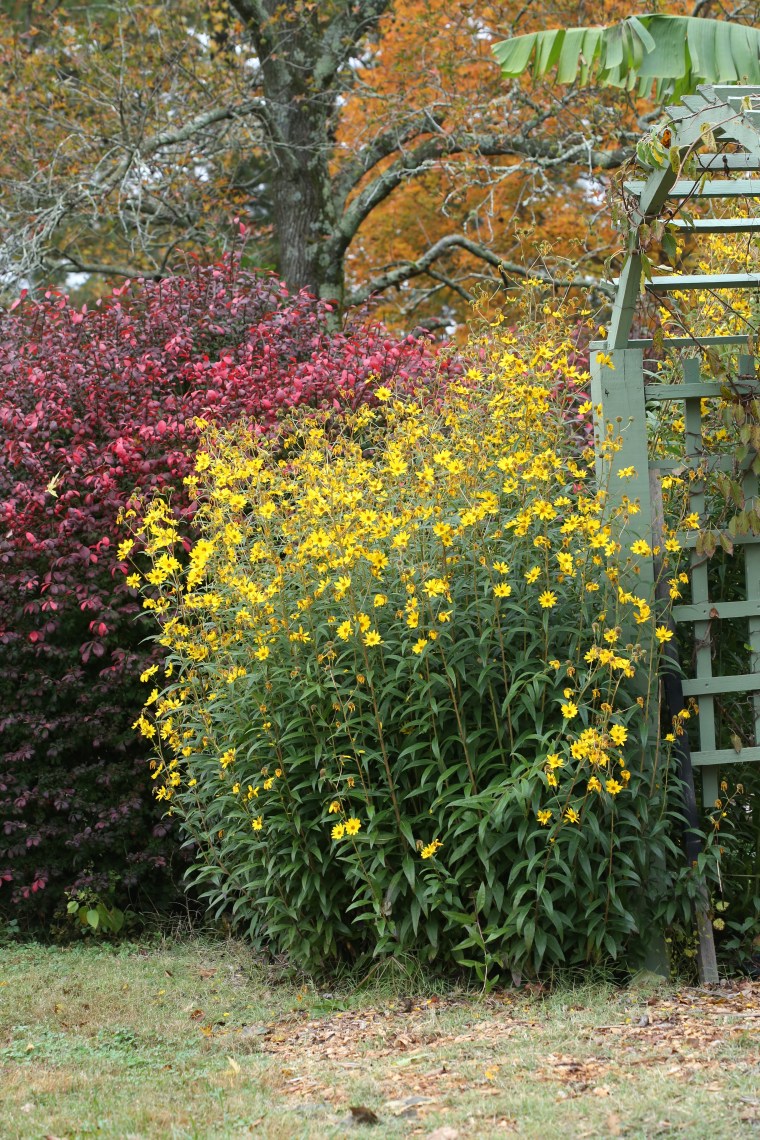 The swamp sunflowers were about 8 feet tall and they are spreading out. Don’t they look beautiful with the Burning Bushes?
The swamp sunflowers were about 8 feet tall and they are spreading out. Don’t they look beautiful with the Burning Bushes?
 Want to plant something that bees and hummingbirds love? Fill your garden with salvias and one of my favorites is Pineapple Sage. The leaves smell like a pineapple lifesaver candy when you rub them and they are edible meaning you can use them as you would most other edible herbs. Honey bees love them and if you have a colony nearby, you might just find enough of them in it to make the whole plant buzz and vibrate. Hummingbirds will visit them too but only if they stay in your area through the fall. Pineapple sages tends to put this show on late in the season and this was taken around the first week of November.
Want to plant something that bees and hummingbirds love? Fill your garden with salvias and one of my favorites is Pineapple Sage. The leaves smell like a pineapple lifesaver candy when you rub them and they are edible meaning you can use them as you would most other edible herbs. Honey bees love them and if you have a colony nearby, you might just find enough of them in it to make the whole plant buzz and vibrate. Hummingbirds will visit them too but only if they stay in your area through the fall. Pineapple sages tends to put this show on late in the season and this was taken around the first week of November.
 Just look at those pollen baskets!
Just look at those pollen baskets!
 We built this out at the Bee Garden and we are hoping that beneficial insects are nesting here.
We built this out at the Bee Garden and we are hoping that beneficial insects are nesting here.

 This garden is just full of color and blooms.
This garden is just full of color and blooms.
 Our climate here allows for tropical plants to grow and thrive during the warmer months but the fruit never has a chance to mature and ripen.
Our climate here allows for tropical plants to grow and thrive during the warmer months but the fruit never has a chance to mature and ripen.
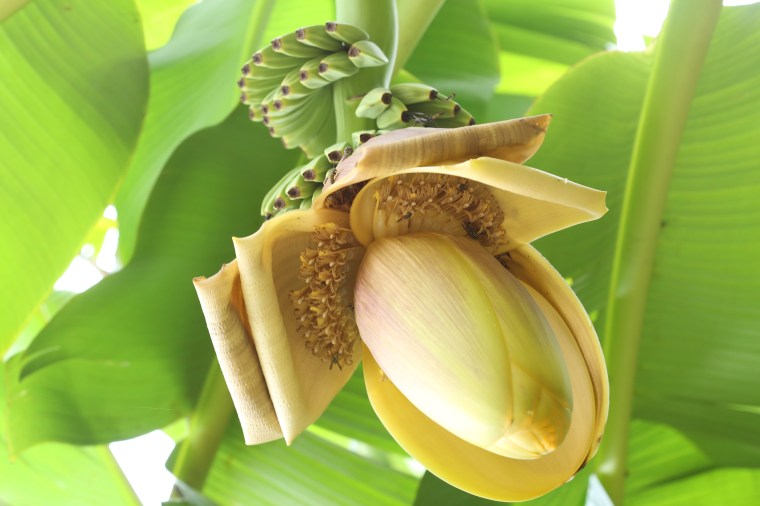 We can only dream about bananas; these did not make it and were killed by frost shortly after I took the photos but while it was blooming, the wasps and bees loved the nectar and pollen.
We can only dream about bananas; these did not make it and were killed by frost shortly after I took the photos but while it was blooming, the wasps and bees loved the nectar and pollen.
 Recently, I flew to Atlanta to visit one of our daughters. Once she had picked me up from the airport and we were on our way for some much needed coffee (it was only 7:30am at this point), she surprised me with the news that we were headed to Asheville. Hiking was on our list of things to do and we set off on the Blue Ridge Parkway. We stopped on several occasions just to admire the view.
Recently, I flew to Atlanta to visit one of our daughters. Once she had picked me up from the airport and we were on our way for some much needed coffee (it was only 7:30am at this point), she surprised me with the news that we were headed to Asheville. Hiking was on our list of things to do and we set off on the Blue Ridge Parkway. We stopped on several occasions just to admire the view. As we drove on, we gained altitude and the views just got better and better.
As we drove on, we gained altitude and the views just got better and better. We were lucky, the weather was perfect; sunny, clear and not too hot.
We were lucky, the weather was perfect; sunny, clear and not too hot.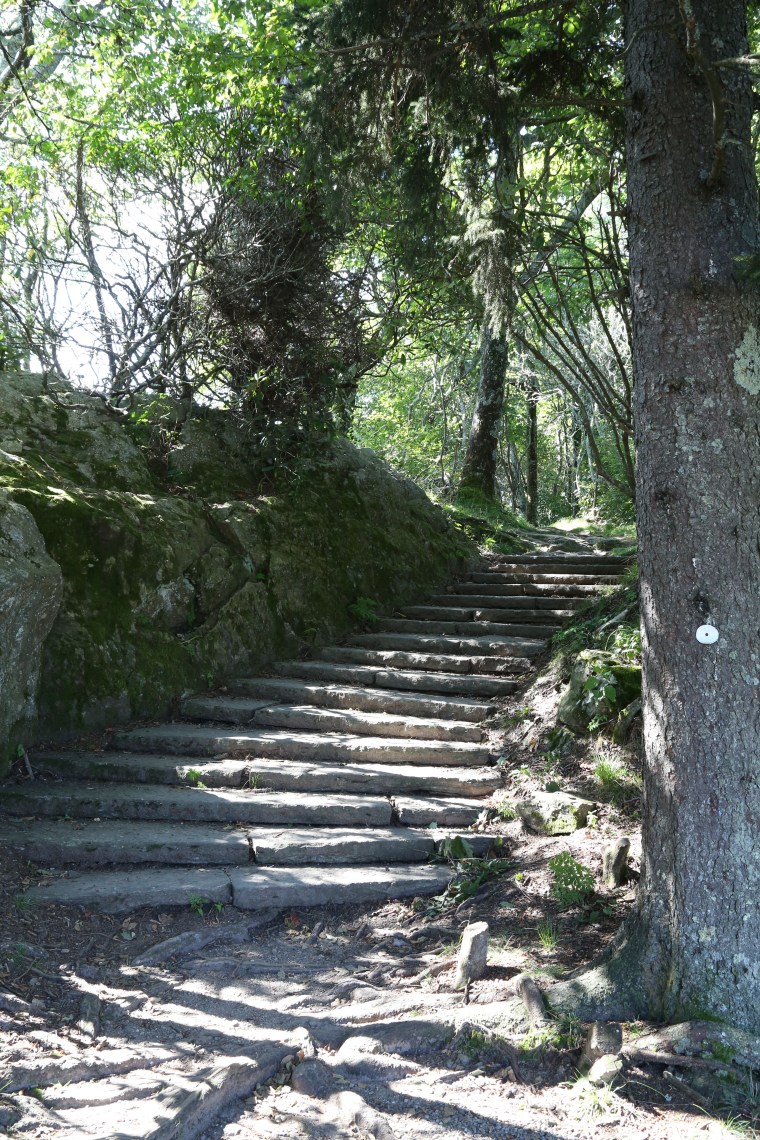 At one stop, the old Buck Spring Lodge site is near the Pisgah Inn on the Mt. Pisgah Summit and there are a few trails around the parking area. Take the stone stairs and follow the trail toward the inn, the views are worth the walk.
At one stop, the old Buck Spring Lodge site is near the Pisgah Inn on the Mt. Pisgah Summit and there are a few trails around the parking area. Take the stone stairs and follow the trail toward the inn, the views are worth the walk. We were headed for Black Balsam Knob and we drove on. These were spotted on the Flat Laurel Creek Trail. If anyone can identify these, please do-I have no idea what they are.
We were headed for Black Balsam Knob and we drove on. These were spotted on the Flat Laurel Creek Trail. If anyone can identify these, please do-I have no idea what they are. Even though were around 6000ft, honeybees were present. While I am sure that the altitude was not an issue for them, I could only wonder if they were there because a beekeeper has hives out there somewhere or if there were feral bee colonies.
Even though were around 6000ft, honeybees were present. While I am sure that the altitude was not an issue for them, I could only wonder if they were there because a beekeeper has hives out there somewhere or if there were feral bee colonies.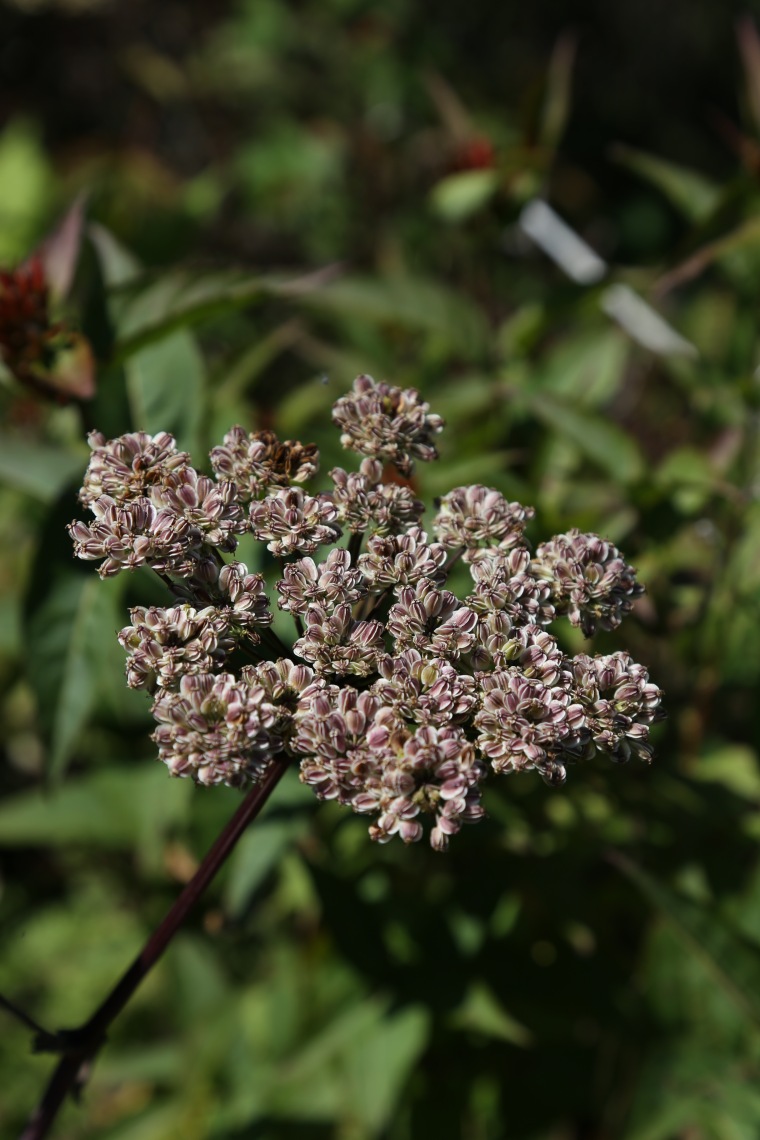 These were spotted along the Art Loeb trail as we hiked up to the top. They had finished blooming for the year and were loaded with seeds for next years blooms.
These were spotted along the Art Loeb trail as we hiked up to the top. They had finished blooming for the year and were loaded with seeds for next years blooms. There was no shortage of Mountain Ash berries.
There was no shortage of Mountain Ash berries. And with goldenrod in bloom, the bees had plenty of flowers for foraging.
And with goldenrod in bloom, the bees had plenty of flowers for foraging. Again, I am looking for an assist on the ID, if you know what this is, I would love to know as well!
Again, I am looking for an assist on the ID, if you know what this is, I would love to know as well! When we finally did reach our goal, not the entire trail but a nice high elevation, we were standing on this rocky spot. The pattern in the surface of the stone is intriguing.
When we finally did reach our goal, not the entire trail but a nice high elevation, we were standing on this rocky spot. The pattern in the surface of the stone is intriguing. We stopped for a bit and enjoyed the view. If you want to take a hike near Asheville, we highly recommend making the trip to
We stopped for a bit and enjoyed the view. If you want to take a hike near Asheville, we highly recommend making the trip to 

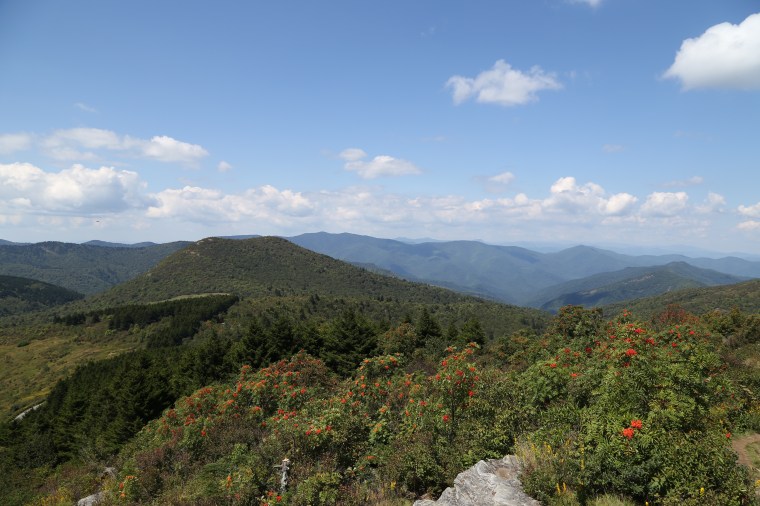

 My hiking partner, Alix. It was a wonderful surprise and it was a perfect afternoon!
My hiking partner, Alix. It was a wonderful surprise and it was a perfect afternoon! All hail the Queen. Can you see her? Center of the photo with the large yellow dot, that is our lady of the hive. We went into the hive yesterday to take a look, and there she was, at the top of the hive on the outside frame-not a good thing. What that means is that she is running out of room to lay eggs so lucky for her, we were prepared and had another box of frames ready to go.
All hail the Queen. Can you see her? Center of the photo with the large yellow dot, that is our lady of the hive. We went into the hive yesterday to take a look, and there she was, at the top of the hive on the outside frame-not a good thing. What that means is that she is running out of room to lay eggs so lucky for her, we were prepared and had another box of frames ready to go. The hive is fairly full, so full that they were building comb in the feeder.
The hive is fairly full, so full that they were building comb in the feeder. Darry cleaned it all out and refilled it with sugar syrup.
Darry cleaned it all out and refilled it with sugar syrup. The hive has really increased in number, look at how busy they are!
The hive has really increased in number, look at how busy they are! To clean out the feeder, Darry took out the floating bars, the bees were pretty calm about it and just gathered on the slats while he worked and I took photos.
To clean out the feeder, Darry took out the floating bars, the bees were pretty calm about it and just gathered on the slats while he worked and I took photos. Drones cannot feed themselves when they first emerge from! The drone (on the left) is being fed by a worker bee (on the right) and he will start feeding himself by the time he is a week old. To learn more about the roles of bees in the hive,
Drones cannot feed themselves when they first emerge from! The drone (on the left) is being fed by a worker bee (on the right) and he will start feeding himself by the time he is a week old. To learn more about the roles of bees in the hive, 
 Check back for more photos, I will post more next time we go in for a look!
Check back for more photos, I will post more next time we go in for a look!











